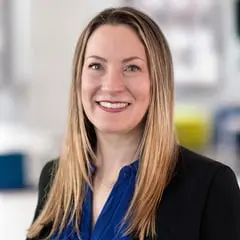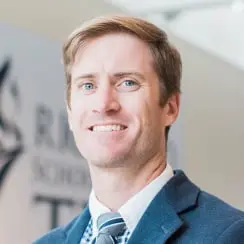 | 1 LU | HSW |
 | 1 LU | HSW |
Call to Action:
Abstract: Richland 2 School District has been leading some of the most forward-thinking projects in the State of South Carolina for decades. Their cutting-edge Blythewood High School (a MacConnell Award Finalist) began a partnership with Perkins & Will and Doug Quackenbush (soon to establish Quackenbush Architects), a collaboration lasting twenty-plus years and resulting in over a dozen successful educational projects. This session will touch on the strategic advantages of this collaboration, leveraging each firm’s strengths and attributes— and the important cultural fit that makes the collaboration work. You will see over the course of this collaboration a shift in facilities and pedagogy of Richland 2 School District to where it has evolved today: the new E.L. Wright Middle School and Center for Knowledge (K-5). The E.L. Wright Middle School and Center for Knowledge Challenge This new, modern complex is located on the original site of the two outdated schools, each with their own car and bus loops and outdoor activity spaces. Despite the challenges of building on an occupied site, the 230,000 square foot design creates a more unified and compact campus, incorporating 21st century learning characteristics and a significant increase in quality green space. Secure outdoor courtyards and organic playscapes are created by the spaces between each of the academic wings, offering opportunities for outdoor learning. The Center for Knowledge (CFK) anchors the southern end of the building and is distinguished from the middle school through the use of bold color and large, picture windows in each classroom.
Key Challenges:
Learning Objectives:
Educational Facility Implementation, Project Management / Project Delivery
Successfully delivering a project that meets the needs of the community, district, and students.

Doug is the founding principal of Quackenbush Architects + Planners, an interdisciplinary design firm located in Columbia, S.C. In his 40-year career, Doug has completed over 400 projects, focusing primarily on educational environments. He and his firm have received over fifty design awards for their work. Doug is a graduate of Clemson University (’82, M ’84) and serves on Clemson’s Board of Visitors. He is the current regional governor representing South Carolina on the A4LE Southeast Board. In 2024, he was the recipient of the A4LE Lifetime Achievement Award.

Aimee is a Principal, and the Firmwide K-12 Practice Leader of Perkins&Will. As a global innovator in PreK-12 school programming and planning, Aimee advocates for forward-thinking solutions that engage learners, educators, and communities. Aimee graduated with a Bachelor of Environmental Design Degree from Miami University of Ohio, followed by a master’s degree in Architecture from University of Wisconsin – Milwaukee.

Will is the Chief Operations Officer for Richland School District Two in Columbia, South Carolina. He plans, directs, and oversees facilities and other land & property resources, transportation and security, maintenance, logistics and other support services for the District. Will has a B.S. degree from the University of South Carolina and a Masters of Public Administration from Clemson University. He is a Past President of A4LE South Carolina and current House of Delegates Member for A4LE.

Jessica is the Principal of Center for Knowledge and Center for Knowledge North in Richland School District Two. She holds a BA in Elementary Education, a M. Ed. in Elementary Education and a M. Ed. in Educational Leadership all from the University of South Carolina. She has served as an administrator at the Center for Knowledge for 12 years. During that time she has worked in partnership to open two brand new facilities. The Center for Knowledge is a highly successful magnet program earning the distinguished Magnet Schools of America Nationally Certification Demonstration Site and being named as a Palmetto’s Finest Finalist twice by the South Carolina Association of School Administrators.